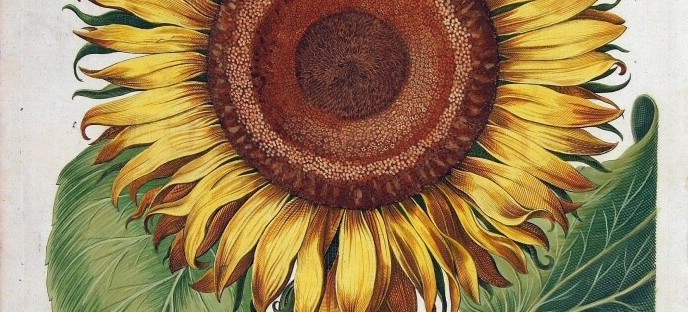East Prussia...or Ostpreussen...was the easternmost part of northern Germany, founded by Teutonic Knights in the 13th century. It was removed from Germany after WWII and is now part of Russia, Lithuania, and Poland. Schwarzwald...or Black Forest...is part of Baden-Württemberg in southwest Germany...home of the Romantic Road and fairytale castles. The young lady is wearing the… Continue reading These Trachten, or folk costumes, represent 10 areas of old Germany… these images were used on a series of postage stamps issued early in the 20th century Germany.
Category: Notes on German Culture
Baltic Germans were the legacy of the 300 year old Teutonic State that ended in 1525
The Germans that colonized and built cities in the lands bordering the Baltic Sea were referred to as Baltic Germans. They ruled regions named Prussia, Kurland, Memel, and Livonia which are now known as the Baltic States: Latvia, Estonia, and northern parts of Lithuania and Poland. German culture thrived in these regions for 700 years.… Continue reading Baltic Germans were the legacy of the 300 year old Teutonic State that ended in 1525
Charlemagne and Cathedrals of Aachen, Worms & Speyer
This image shows Karl der Grosse (Charlemagne), as depicted by Albrecht Dürer, plus the Cathedrals of Aachen, Worms & Speyer, protected by an angel with sword. Aachen Cathedral is known as the Kaiserdom, or Imperial Cathedral. It is a Roman Catholic church in Aachen, Germany built by Charlemagne. He began the construction of the Palatine… Continue reading Charlemagne and Cathedrals of Aachen, Worms & Speyer
Spitzweg painted scenes that make us appreciate the beauty of nature and our everyday life
Carl Spitzweg painted this image, "Der Maler" (The Artist). It portrays a young artist taking a break from painting and day dreaming under a tree. Spitzweg painted scenes like this one that portrayed normal activities in a way that makes us stop and appreciate the beauty of nature and our everyday life. The Artist, 1850… Continue reading Spitzweg painted scenes that make us appreciate the beauty of nature and our everyday life
This amazingly detailed sunflower image was printed 408 years ago in Nuremberg, Germany
Published in 1613 by Basilius Besler, the book "Hortus Eystettensis" contained the first finely detailed depiction of a Sunflower (Flos solis maior). The emphasis in botanicals of previous centuries had been on medicinal and culinary herbs, and these had usually been depicted in a crude manner. The images were often inadequate for identification, and had… Continue reading This amazingly detailed sunflower image was printed 408 years ago in Nuremberg, Germany
Cowboys und Indianer
This vintage photo from post war Lübeck in northern Germany is not the best quality but it shows that even in those hard times, little German kids loved to dress up like Cowboys und Indianer. Looking at this now I have to laugh at my brother's Indian outfit...that white holster just did not look right.… Continue reading Cowboys und Indianer
The Biedermeier Era is sometimes referred to as the Romantic era
The Biedermeier style, which originated in Germany and Austria, flourished in the prosperous middle-class homes of Europe from about 1815 to 1848. A "Zimmerbild", which is a chamber painting, of a room in Berlin, circa 1825, representing the Biedermeier era: fitted carpets, unified window and pier-mirror draperies, and framed engravings in a restrained classical style…… Continue reading The Biedermeier Era is sometimes referred to as the Romantic era
Travel routes to the popular German seaside resort at Cranz in East Prussia in 1930
"Ostpreussen...Reisewege Nach Cranz an die Ostsee"....Vintage travel advertising for routes to the popular German Baltic Sea resort at Cranz. This 1930's advertising poster shows the various routes to the seaside resort at Cranz... by train, car, sea or by air... with emphasis on routes from Berlin and Breslau. Of particular interest to historians is how… Continue reading Travel routes to the popular German seaside resort at Cranz in East Prussia in 1930
Grimm brothers German folk tales were not originally intended for children
Wilhelm and Jacob Grimm, 1855 painting by Elisabeth Jerichau-Baumann We all know the fairy tales that made the Grimm brothers famous. The two brothers collected, edited, modified and popularized stories such as "Cinderella" "(Aschenputtel)", "The Frog Prince" ("Der Froschkönig"), "Hansel and Gretel" ("Hänsel und Gretel"), "Rapunzel", "Rumpelstiltskin" ("Rumpelstilzchen"), and "Snow White" ("Schneewittchen"). Their 1812 book is commonly… Continue reading Grimm brothers German folk tales were not originally intended for children
Queen Victoria and Prince Albert continued the German heritage of British monarchs
This portrait of Queen Victoria and family was painted by Franz Winterhalter in 1846. Winterhalter was a German artist who first visited Britain in 1842 and became one of Queen Victoria and Prince Albert's favorite painters, creating about 120 works for them. Queen Victoria was the last British monarch of the German House of Hanover.… Continue reading Queen Victoria and Prince Albert continued the German heritage of British monarchs











